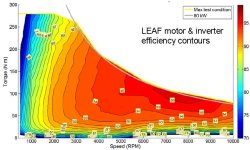Formula E went with a multispeed for a good reason
Sound FX
It is more exciting to hear a vehicle shift. Even I cannot deny that.
I would rather there be a spec battery and then the rest be unlimited
Except a minimum weight to keep costs down
It will be exciting to see direct drive vs geared motors race
In the early days of electric racing I expect efficiency to be the pièce de résistance and single speeds will win, but as wireless charging comes into play along with next gen batteries all out performance is what will win races...in that situation you could see 2 and 3 speed cars, or more likely magnetic cvt's (built into "direct drive" motors) with N120 magnets
Sound FX
It is more exciting to hear a vehicle shift. Even I cannot deny that.
I would rather there be a spec battery and then the rest be unlimited
Except a minimum weight to keep costs down
It will be exciting to see direct drive vs geared motors race
In the early days of electric racing I expect efficiency to be the pièce de résistance and single speeds will win, but as wireless charging comes into play along with next gen batteries all out performance is what will win races...in that situation you could see 2 and 3 speed cars, or more likely magnetic cvt's (built into "direct drive" motors) with N120 magnets



